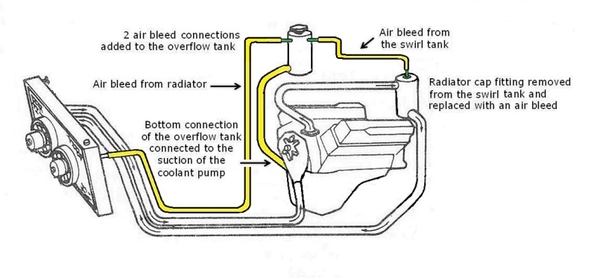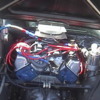My never-ending project Pantera is exhibiting some strange sounds after we swapped out intake manifolds and installed a new EFI system. My setup is a 351W steel block bored and stroked to 383 with Edelbrock Victor Jr. aluminum heads an Edelbrock Performer RPM manifold and Holley Sniper EFI. I have 180 degree headers. I also installed a new thermostat in the correct orientation. Part of the job of installing a new intake manifold entailed draining about a half gallon or so of coolant so that we could safely remove the old intake manifold without dumping coolant into the motor valley.
I’m pretty sure that, due to my lack of Pantera experience, we’ve overfilled the cooling system. When we finished work, we added coolant back into the small tank. I run about 190-210 coolant temp after running the car and driving it for a while and after parking it at these temperatures I hear a pretty substantial boiling sound in the cooling system tanks. Water temp doesn’t get too high, and I don’t overheat, but I am barfing coolant out on the ground. The boiling sound continues until the engine cools down a bit.
My hunch here is that I have air trapped in the system. I need to bleed it, but I am admittedly having a bit of confusion as to the correct identification of the two coolant tanks as well as the proper procedure to bleed the system. I have the Hall Pantera giant lay-down radiator in the front and all stainless steel water lines. All fittings are tight and good. I am not dumping coolant into the oil or exhaust so there’s no head gasket issues.
Regarding the cooling tanks, I have a short tank toward the firewall and a taller tank toward the rear. There is a pressure relief cap on the short tank, and a normal cap on the tall tank. Which tank is which? Also, what is the correct procedure to follow when bleeding the system? Apologies if these questions have been asked before, but I was not able to locate much using the forum search (or google search)...You can see in the photo that I’m dumping coolant out of the tanks as well.








